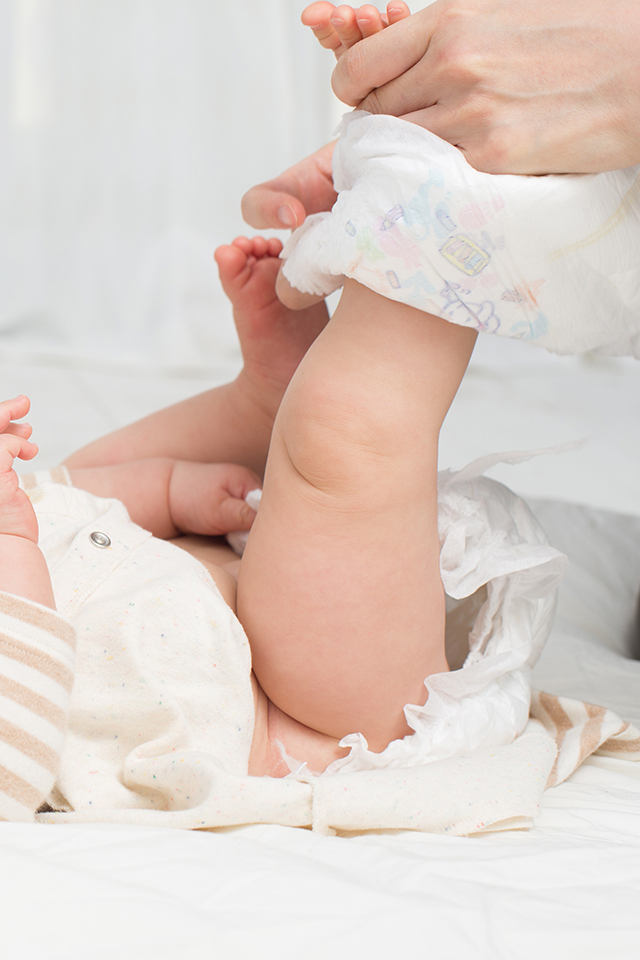Baby diapers should be changed regularly to prevent rashes and infections. Neglecting diaper changes can harm a baby’s skin health.
Regular diaper changes are crucial for your baby’s comfort and health. Prolonged exposure to a wet or soiled diaper can cause skin irritation, diaper rash, and even infections. Parents should check diapers frequently and change them as soon as they are wet or dirty.
This practice keeps the baby’s skin clean and dry, reducing the risk of irritation and promoting overall well-being. Using high-quality diapers and baby-friendly wipes can also help maintain good hygiene. Always ensure you have a clean diaper on hand, especially during outings, to keep your baby comfortable and happy. Prioritizing regular diaper changes is essential for your baby’s health and comfort.

Credit: www.reddit.com
Importance Of Regular Diaper Changes
Regular diaper changes are crucial for your baby’s health and comfort. Neglecting this simple task can lead to numerous issues. Babies need clean diapers to stay happy and healthy.
Health Benefits
Changing diapers regularly prevents diaper rash. Clean diapers reduce the risk of bacterial infections. Wet or soiled diapers can cause skin irritation. Changing frequently keeps the skin dry. A clean diaper also minimizes the risk of urinary tract infections. Regular changes are essential to keep your baby free from health issues.
Comfort And Happiness
Babies feel uncomfortable in dirty diapers. A clean diaper makes them feel fresh. Changing diapers often keeps them cheerful. Comfortable babies tend to cry less. Regular changes ensure they sleep better. A happy baby means a happy parent.
Signs It’s Time For A Change
Knowing when to change a baby’s diaper is essential for their comfort and health. Babies can’t tell you they need a change, but they show signs. Understanding these signs ensures a happy, healthy baby. Here are the key indicators to watch for.
Physical Indicators
Physical signs often show the need for a diaper change. These include:
- Wetness: The diaper feels heavy or damp to the touch.
- Fullness: The diaper looks saggy or bulky.
- Leakage: Wet spots appear on the baby’s clothes.
- Odor: An unpleasant smell comes from the diaper area.
- Redness: The skin looks red or irritated.
Behavioral Clues
Babies may also show behavioral signs when they need a diaper change. These can include:
- Fussiness: The baby seems unusually cranky or irritable.
- Squirming: The baby wriggles a lot, especially in the diaper area.
- Crying: The baby cries without any clear reason.
- Touching: The baby touches or scratches the diaper area.
- Discomfort: The baby seems uncomfortable or restless.
Recognizing these signs helps keep your baby clean and happy. It’s important to check diapers often and change them promptly. This prevents rashes and discomfort, ensuring your baby’s well-being.
Risks Of Not Changing Diapers
Not changing a baby’s diaper can cause many problems. It can make the baby uncomfortable and sick. Learn about the risks and keep your baby healthy.
Skin Irritations
Dirty diapers can cause skin irritations. The baby’s skin is very soft and sensitive. When it stays wet, it can become red and sore.
This can make the baby feel pain and cry. Sometimes, the skin can even bleed. To avoid this, change the diaper often.
Infections
Leaving a dirty diaper on too long can cause infections. Bacteria and fungi love warm, wet places. A dirty diaper is perfect for them.
Babies can get rashes that can become infected. This can lead to more serious health problems. It is very important to change the diaper before it gets too dirty.
| Problem | Cause | Solution |
|---|---|---|
| Skin Irritations | Wet and dirty diaper | Change diaper frequently |
| Infections | Bacteria and fungi | Keep the baby clean |
- Change diapers every 2 to 3 hours.
- Use a soft cloth to clean the baby.
- Apply a diaper rash cream if needed.
- Check the diaper often.
- Keep a stock of clean diapers.
- Wash your hands before and after changing the diaper.
Common Misconceptions
Many parents have misconceptions about baby diapers. These myths can lead to frequent mistakes. Let’s debunk some common myths.
Myths About Modern Diapers
Some believe modern diapers cause more rashes. This is untrue. Today’s diapers are made with soft, absorbent materials.
Another myth is that cloth diapers are always cheaper. Cloth diapers can be costly due to laundry expenses.
Disposable diapers are often seen as harmful to the environment. Many brands now use eco-friendly materials. This reduces their environmental impact.
False Economies
Buying cheap diapers can seem like a good idea. Cheap diapers often need more frequent changing. This can lead to higher costs in the long run.
Skipping diaper changes to save money can cause skin irritation. This may result in expensive medical treatments.
Investing in quality diapers is often more economical. Quality diapers offer better protection and comfort.
| Misconception | Reality |
|---|---|
| Modern diapers cause rashes. | Modern diapers use soft, absorbent materials. |
| Cloth diapers are always cheaper. | Cloth diapers can have high laundry costs. |
| Cheap diapers save money. | Cheap diapers need more frequent changes. |
Creating A Diaper Changing Routine
A proper diaper changing routine keeps your baby happy and healthy. Consistency ensures your baby stays clean and comfortable. This guide helps you set a diaper changing schedule, gather essential supplies, and establish a smooth routine.
Setting A Schedule
Setting a schedule helps in managing diaper changes efficiently. Change diapers every 2-3 hours during the day. Check diapers after naps and feedings. Establish a routine before bedtime and after waking up.
| Time | Activity |
|---|---|
| 6:00 AM | Diaper change after waking up |
| 9:00 AM | Diaper check and change |
| 12:00 PM | Diaper change after feeding |
| 3:00 PM | Diaper check and change |
| 6:00 PM | Diaper change before bedtime |
Essential Supplies
Having the right supplies makes diaper changes easier and faster. Here is a list of essential supplies you need:
- Diapers
- Baby wipes
- Changing mat
- Diaper cream
- Hand sanitizer
- Extra clothes
Keep these supplies within reach. A well-stocked diaper changing station saves time and effort. Store items in a basket or organizer for easy access.
Tips For Busy Parents
Parenting keeps you on your toes. You juggle many tasks daily. Diaper changes can feel overwhelming. Here are some practical tips to make this task easier.
Quick Change Techniques
Speed is crucial for busy parents. Use these quick change techniques:
- Keep Supplies Handy: Always have diapers, wipes, and cream ready.
- Pre-Folded Diapers: Pre-folding diapers saves time.
- Easy Access Clothing: Choose outfits with easy access like snaps or zippers.
Practice these techniques to make diaper changes faster and smoother.
Involving Family Members
Involving family members can ease the diaper-changing process. Here are some ideas:
- Assign Tasks: Split tasks between family members.
- Teach Older Siblings: Older children can help with small tasks.
- Use a Diaper Chart: Create a chart to track diaper changes.
Sharing the responsibility can make life easier for everyone.
Emergency Situations
Sometimes, changing a baby’s diaper becomes an urgent task. Delaying a diaper change can lead to discomfort or health issues. Learn how to handle these emergency situations quickly and effectively.
Recognizing Urgent Needs
It’s crucial to recognize when a diaper needs immediate changing. Here are some signs:
- Foul Odor: A strong smell indicates a messy diaper.
- Cry of Discomfort: Babies cry if they feel wet or dirty.
- Red Marks: Redness around the diaper area signals irritation.
Acting quickly can prevent rashes and infections.
What To Do When Out And About
Changing a diaper outside the home can be challenging. Follow these steps to manage the situation:
- Find a Clean Space: Look for a restroom with a changing table.
- Prepare Supplies: Have a diaper bag with essentials ready.
- Use Disposable Mats: These keep surfaces clean and hygienic.
- Dispose Properly: Use diaper disposal bins or seal in a plastic bag.
Always carry a spare outfit for emergencies.
| Essential Items | Description |
|---|---|
| Diapers | Always carry at least 3 diapers. |
| Wipes | Use unscented wipes to clean the baby. |
| Changing Mat | Disposable or washable mats are ideal. |
| Hand Sanitizer | Clean your hands before and after changing. |
:max_bytes(150000):strip_icc()/GettyImages-1440161652-eda173ddbda04024ae5db52905b2c6aa.jpg)
Credit: www.parents.com
Encouraging Good Habits
Changing diapers can become a routine. Encouraging good habits early can make it easier. Babies can learn and adapt quickly with the right approach.
Positive Reinforcement
Use positive reinforcement to make diaper changes fun. Smile and talk to your baby during changes. Use gentle words and a calm tone. This makes the experience pleasant.
Here are some tips for positive reinforcement:
- Give a small toy to hold.
- Sing a soothing song.
- Offer a favorite blanket.
Monitoring Baby’s Cues
Babies often show signs when they need a change. Watching for these cues can help. It can reduce fussiness and discomfort.
Signs your baby needs a diaper change:
| Signs | Description |
|---|---|
| Fussing | Crying or being restless. |
| Sniffing | Smelling an odor from the diaper. |
| Checking | Feeling the diaper for wetness. |
Responding quickly to these cues helps keep your baby comfortable. It also helps prevent diaper rash and other skin issues.

Credit: creatorishop.com
Frequently Asked Questions
What Happens If You Don’t Change A Baby’s Diaper?
Not changing a diaper can cause diaper rash. It can lead to discomfort and infections. Frequent changing keeps the baby clean and healthy.
How Often Should You Change A Baby’s Diaper?
Change a diaper every 2-3 hours. Check more frequently if the baby has sensitive skin. At night, change when the baby wakes up.
Can A Dirty Diaper Cause Infections?
Yes, dirty diapers can cause infections. Bacteria and moisture create a breeding ground for infections. Keep the diaper area clean and dry.
How Can You Tell If A Diaper Needs Changing?
Check the diaper for wetness or smell. Look for signs of discomfort. A heavy diaper is another indicator.
Conclusion
Neglecting to change a baby’s diaper can lead to rashes and discomfort. Always check and change diapers regularly. Prioritize your baby’s hygiene to ensure their happiness and health. A clean diaper means a happy baby, fostering their growth and well-being.
Keep diaper changes a top priority for your little one.




